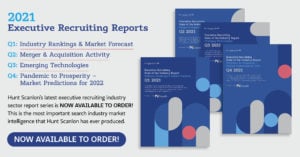How to Define Your Professional Brand

September 15, 2021 – When most people think of brands, they first think of well-known consumer packaged goods or durable goods, such as Pepsi or Ford. These are often synonymous with TV commercials and other mass media advertising with big budgets, which are aimed at consumers. They have defined identities comprised of a logo and tagline, and they have a strong, consistent message. In actuality, all products and services have brands whether a team works to strengthen them or not. According to a new report from Nicole Zeller of Wexford, PA-based Helbling & Associates, “brand extends beyond a visual identity and written messaging. It can involve a backstory, how an organization performs for clients or customers, the way a receptionist answers the office phone, the condition of a vehicle, and the speed at which someone responds to a new business inquiry.” People can have brands, too, she said. “Professional ones are often formed by an individual’s performance, skills and personality.”
Ms. Zeller said that if your organization is in hiring mode, company brand will be of interest to potential employees. “An informal brand assessment is one way they gauge if your workplace is one in which they can picture themselves,” she said. “To illustrate your brand in a way that could resonate with potential employees, think about why you enjoy working for your organization.”
Ms. Zeller also said that if you are an individual in job search mode, your unique brand will be of interest to potential employers. “A formal brand assessment during an interview is one way they gauge whether they can picture you in their workplace,” she said. “To form your brand, think about what feedback you have received from your former or current employer.”
 Joining Helbling & Associates in 2019, Nicole Zeller’s role involves collaborating with senior management to develop and implement strategic plans, managing outreach to new markets, and facilitating partnerships with industry organizations. She brings experience from positions in marketing/communications firms and expertise as a consultant. Ms. Zeller has worked with clients ranging from small non-profits to Fortune 50 corporations.
Joining Helbling & Associates in 2019, Nicole Zeller’s role involves collaborating with senior management to develop and implement strategic plans, managing outreach to new markets, and facilitating partnerships with industry organizations. She brings experience from positions in marketing/communications firms and expertise as a consultant. Ms. Zeller has worked with clients ranging from small non-profits to Fortune 50 corporations.
Four Ways to Define Your Brand
1. “Select three to five words or phrases that describe your organization or you as an individual,” Ms. Zeller said. “The more specific adjectives the better to help differentiate your organization from others hiring or you from other candidates.” For example, a corporation that supports local non-profits might be “community-caring” and an individual who handles complex, emergency situations might be a “critical problem solver.”
2. Prepare a few sentences to express your brand verbally. “Some people refer to this as an elevator pitch, which is how you would quickly interest and inform someone about something during the length of an elevator ride,” Ms. Zeller said. “In this case, it is a 30- to 60-second sales speech on who you are and why you are unique. Or who your organization is and why it is unique.”
Related: How Search Firms Can Leverage Brand Equity for Growth
3. Ms. Zeller also says to determine what accomplishments, positive attributes and strengths support your brand. “For individuals, these should include metrics or measurable, quantifiable results as well as skills, training and other experience,” she said. “For organizations, this may include revenue, number of employees and other statistics that convey growth or stability, planned initiatives and goals, and opportunities for employees.”
“Determine what weaknesses could threaten your brand,” Ms. Zeller said. “This self-assessment exercise presents an opportunity to address noted weaknesses or to indicate awareness of them and prepare a statement to explain them.”
4. Test your brand. Ms. Zeller says to carry this identity through to materials you develop, such as a position description or resume, and to your company or individual LinkedIn page. “Use your pitch in a formal interview, while networking in the industry or community, or to adjacent audiences that might refer or recommend you or your organization,” she said. “Observe how people react to the words you use and notice whether their follow-up questions align with the message you want to communicate. Adapt your message based on the responses you receive, providing it is constructive, helpful feedback from a trusted source.”
“Remember, if you get stuck, you can always ask a third party (such as an executive search firm) to provide an objective perspective on what makes you or your organization stand out,” Ms. Zeller said.
Related: 11 Best Practices for Creating Brand Advocates During the Hiring Process
Contributed by Scott A. Scanlon, Editor-in-Chief; Dale M. Zupsansky, Managing Editor; and Stephen Sawicki, Managing Editor – Hunt Scanlon Media













